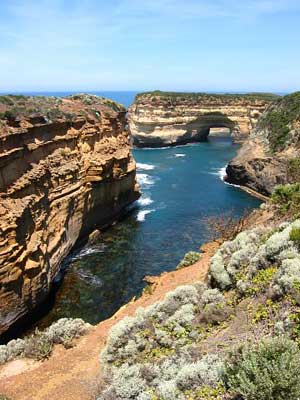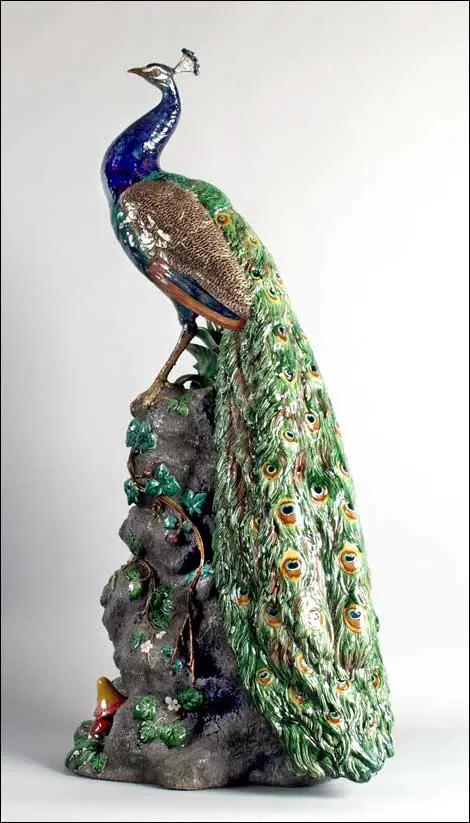Australia For Everyone: Canberra
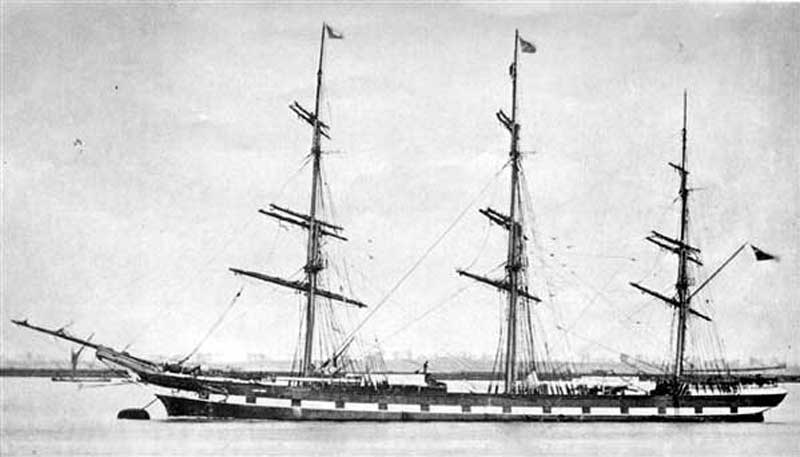
Loch Ard Shipwreck, 1878
There have been many tragic shipwrecks in Australia’s history but few have been worse than that of the Loch Ard, which came to grief of Victoria’s Shipwreck Coast. The Loch Ard was a clipper, a long fast passenger carrying sailing ship. The Loch Ard was an iron clipper ship, which was built in the Clyde by Barklay, Curle and Company in 1873. She was described as being 1693 tons gross weight, and was 263 feet 7 inches long, 38 feet 3 inches wide (beam) and 23 feet depth. Her masts were almost 150 high, and she was launched on 8th November 1873.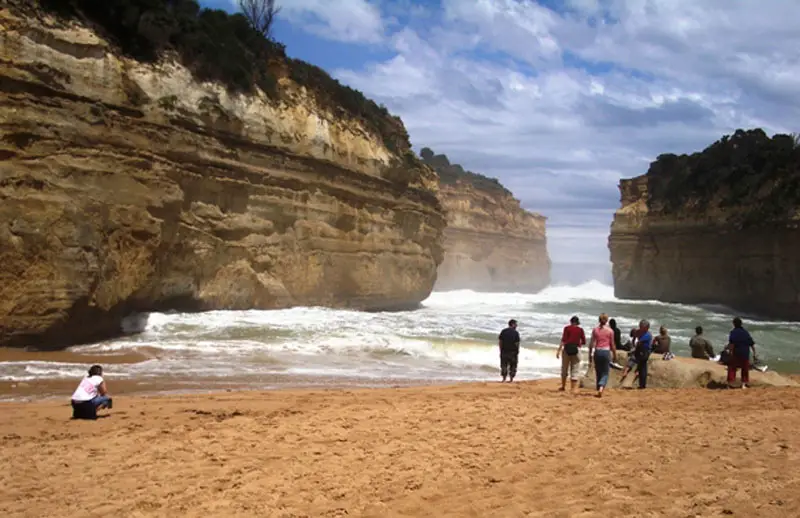
Loch Ard Gorge
The ‘Loch Ard’ had a short but eventful life carrying carried cargo and passengers between Liverpool and Melbourne. When she began her famous and last voyage, the Loch Ard had not made a successful journey. She had been twice dismasted on her maiden voyage and narrowly escaped being driven ashore at Sorrento, Victoria on 24th May 1874. She set out on its 7th voyage from Gravesend, England on 2nd March 1878. The purpose of the voyage was to discharge cargo and passengers in Melbourne, Australia and then return to Gravesend via the Horn with wool and wheat. But the 7th voyage of the Loch Ard wasn’t successful either.
All up there were 54 people on board the clipper with 37 of them being crewmembers and the other 17 being rich folks who wanted to settle in Victoria. Many of the passengers were from the Carmichael family, who were migrating to the colonies because their father was sick. After thirteen long weeks, the ship was finally within days of arriving in Melbourne. One night, there was bad weather, and a thick mist off the coast of what is today port Campbell National Park on Victoria’s notorious Shipwreck Coast. The ship drifted about 100 miles off course and instead of sighting the Cape Otway Lighthouse the ship struck land.
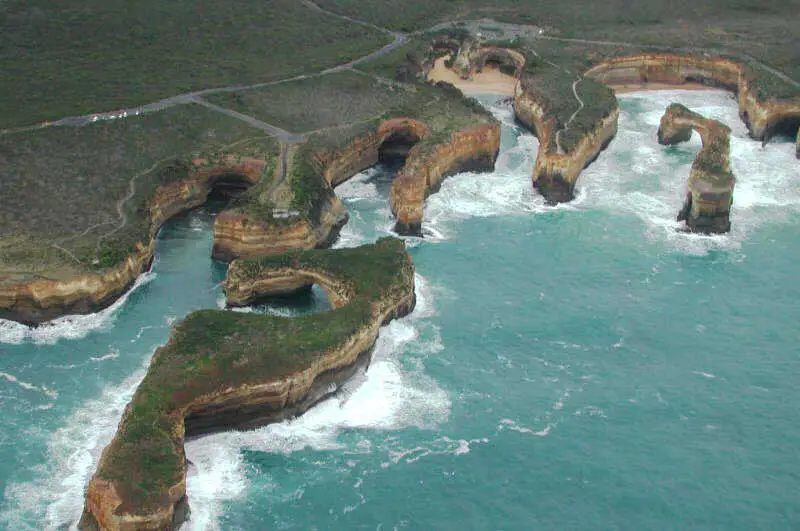
When the mist lifted, the captain saw that they were only two kilometres from the jagged cliffs at the edge of the water. The captain tried very hard to avoid the cliffs, heading out to sea, and dropping anchors, but it was no use. At approximately 5am on Saturday 1st June 1878. there was a terrible crash, and the ship ran into a small island, Mutton Bird Island, east of Sherbrooke River near Port Campbell. The Loch Ard sank in only fifteen minutes.
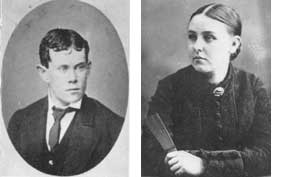
There were only two people that survived the wreck: Thomas Pierce who was an apprentice midship man on board the Loch Ard and Miss Evelyn (Eva) Victoria Berta Carmichael, aged 19 and the daughter of a doctor, who wanted to settle down and work in Victoria. Dressed in her night gown, Eva was thrown into the water as the ship grounded. Unable to swim and totally exhausted, she was found drifting into Loch Ard Gorge on some wreckage by Pierce who had already been washed into it on an upturned life raft. Pierce swam out to her, brought her to the bay’s beach and climbed the cliff to get help. He failed to see a flight of stairs that had already been cut into the rock leading down from the cliff top to the bay. Mr Gibson, the owner of Glenample Homestead, noticed Pierce while mustering cattle. He returned 10 miles to his home to get some rope and help.
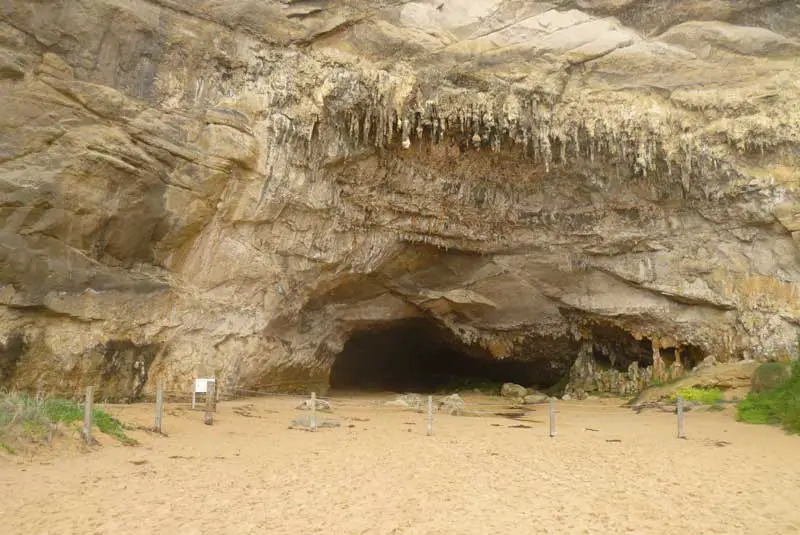
When he returned Eva was nowhere to be seen, but after climbing down the cliff they found her fast asleep in a cave. Mr Gibson then took Tom and Eva back to his homestead where they spent the next few weeks recovering. They also had to stay there until it was decided what their future would be as all of Eva’s family had drowned and Tom’s family was still in Gravesend, England.
Tom and Eva soon discovered that they were the only survivors from the wreck. So did the Victorian public and the newspapers and the pair became celebrities. Tom was given medals and money for his bravery. People all through the colony saw the situation as romantic and wanted Tom and Eva to fall in love and be married, saying that God had brought them together for a reason. Tom and Eva, however, did not feel the same way. After staying at Glenample for a few months Pearce returned to England to continue his apprenticeship as a midship man on board the Loch Sunart in which he was shipwrecked off the coast of Ireland in 1879. Previous to the Loch Ard sinking, Pearce had served on the ‘Eliza Ramsden’ when she sank in Port Phillip Bay in 1875. He returned to England and married another woman, related to a man who died in the shipwreck, and started a family. Eva married Thomas Achilles Townsend who was questioning her about the wreck of the Loch Ard. He came from the museum in Warrnambool, but he had migrated to Australia from England. After getting married Eva returned to Ireland with her husband to be with her brother, William. She continued to stay in touch with the Gibson’s though until the day she died.
The small bay surrounded by cliffs where the pair came ashore, was named after the ship that met its end there. At Loch Ard Gorge, the place where Tom rescued Eva is signposted, and a small cemetery where four victims of the wreck were buried is nearby. In 1982, the ‘Loch Ard’ was declared an historic wreck under the Commonwealth Government Historic Shipwrecks Act.
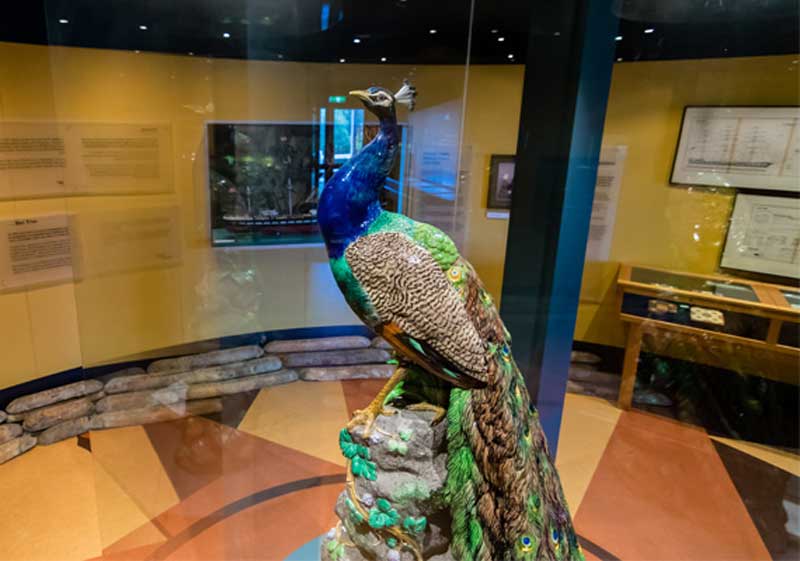
Minton porcelain Peacock from the Loch Ard wreck, now on display at the Flagstaff Hill Maritime Village, Warrnambool
At the time of the sinking, much of the cargo aboard the Loch Ard, which was estimated to be worth more than 53,000 pounds, was destroyed as it was swept into the gorge. One of the most unlikely pieces of cargo to have survived the shipwreck was a Minton porcelain Peacock; one of only nine in the world. The peacock was destined for the Sydney and Melbourne exhibitions in 1889 and 1890. It was well packed in a wooden packing case, which no doubt gave it good protection during the violent storm that had battered the stricken Loch Ard. Today, the original peacock from the Loch Ard can be seen at Flagstaff Hill Maritime Village at Warrnambool.
The wreck of the loch Ard still lies at the base of Mutton-bird Island and much of the cargo has been salvaged. Some was washed up into loch Ard gorge following the shipwreck. Cargo and artefacts have also been illegally salvaged over the years. It covers a wide area, and has a length of 80 meters. The site extends from 10 &endash; 25 meters depth. At 10 meters a large section of the hull lies concreted to a collection of railway irons. At 15 meters, Lead and zinc sheet rolls, copper plating, marble, ceramics, pewter mugs and inkwells can be seen.
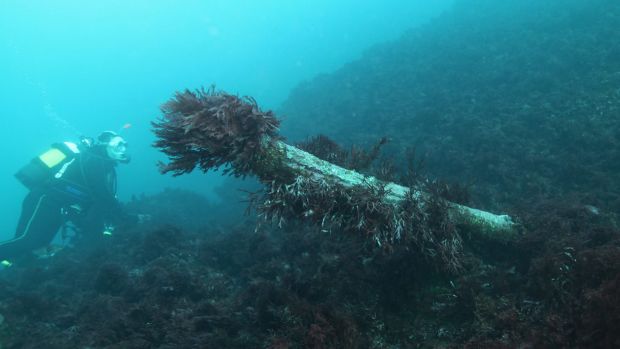
Extensive hull plating is strewn over the site. The bow is relatively intact with its bowsprit jammed under a rock. Nearby, lie the Loch Ard’s anchors. On the port side of the bow, divers can see a section of the hull with deadeyes (used to secure rigging). The port side of the hull hasactually collapsed down the side of Mutton-bird Island spilling its contents. The sip’s frames extend back to a section of the starboard side of the hull. In part of the wreck, the hull leans against the island to form a cave. The stern of the ship has not been found and has possibly broken up overtime.
Diving on the Loch Ard requires calm conditions and a very low swell. The best time to dive the wreck is March, April and May. The anchorage is in 25-30 meters of water and even on relatively calm days, the backwash from Mutton-bird Island can be quite severe. There is also a risk of changeable weather in this part of the coast. Care must be taken to avoid the wave break east of Port Campbell at the entrance to the inlet. Before diving on the Loch Ard, divers should register with the Department of Conservation’s Port Campbell’s office at Port Campbell.
Location: Latitude : 38″ 39’06” south, Longitude : 143″04’30” east







